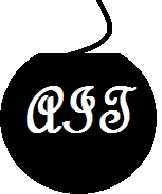STEAM BLOWING OF BOILER
1.) Steam Blowing of Boiler & Piping:-
1.Steam blowing is done to remove the mill scales, weld bead deposits, pipe slag, loose materials that might have entered into the Super heater & steam piping system during the course of boiler fabrication, storage, erection or repair.
2. Failure to clean the super heater & steam piping would lead to turbine blade damage.
2.) Principle of steam blowing:-
-
The principle of steam blowing is to give a thermal shock and dislodge scales.
-
These scales are subsequently driven by the dynamic velocity of the expanding steam.
-
Pressure is built up in the boiler, and then released through the steam lines.
-
The Steam carrying coils and steam piping are allowed to cool after a blow.
-
The cyclic heating, cooling, blowing is repeated until the steam emerging from the steam blow piping is observed clean.
-
The effectiveness of the cleaning is determined by the use of a target plate placed at the outlet of blow piping.
